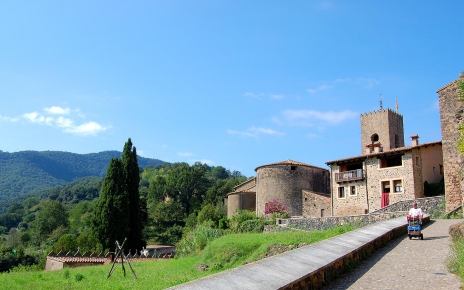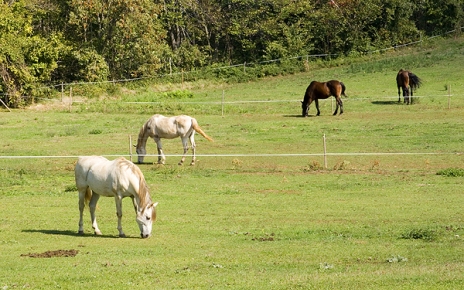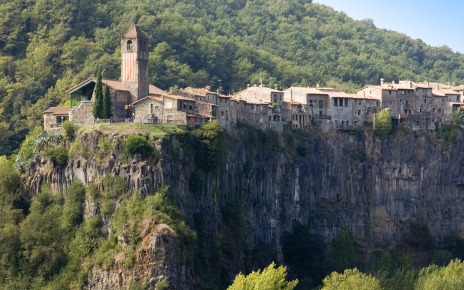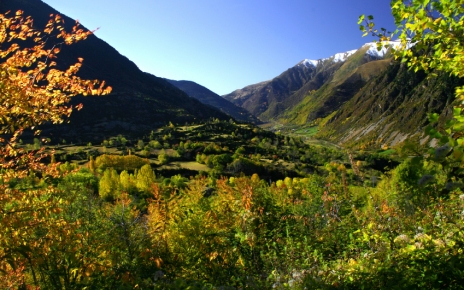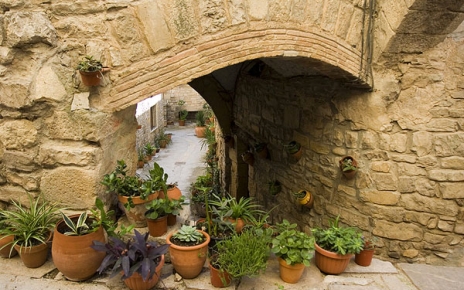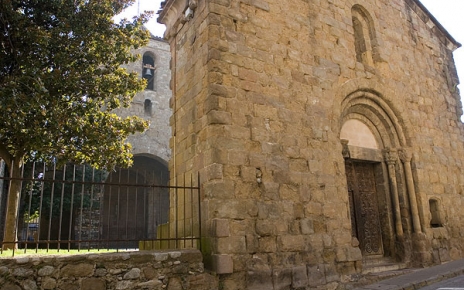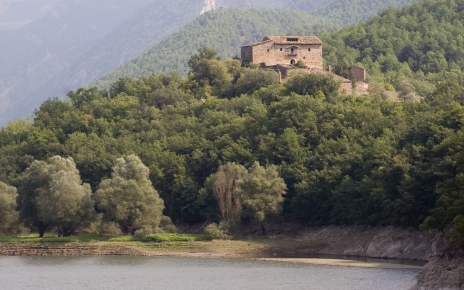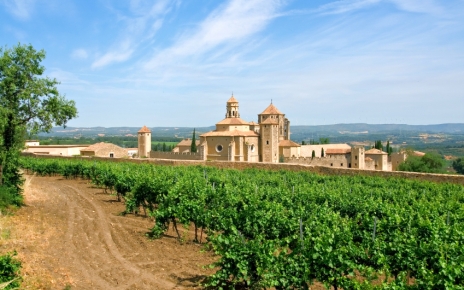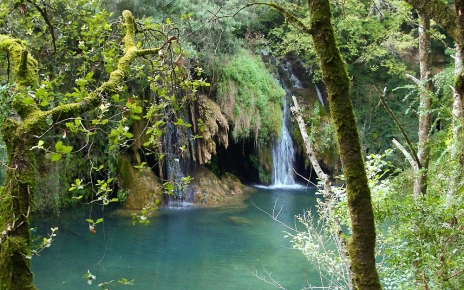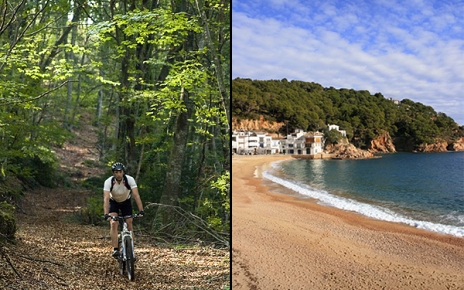Holidays in Catalonia
Everything you need to plan the perfect holiday in Catalonia: how to get there, the best places to stay, the best times of year to go, and an unbeatable selection of hand-picked holiday villas and cottages.
Find your Holiday home in Catalonia
Summary
Rural means stylish in Spain’s north-east where Catalonians invite you to the very best in natural holiday experiences.
When Catalonians make a historic claim to independence within Spain, they are aware of having an entire "country within a country."
It's a proud and a more prosperous land than much of the rest of the Spanish peninsular, with a natural and cultural wealth that can sometimes leave the rest behind.
If Andalucia has Picasso, Catalonia has Gaudi and Dali. And where most of Spain has local shops, here you'll also find delicatessen.
Barcelona is one of the world's great tourist destinations, yet for a real feel of Catalonia, try a rural location. Country holidays are stylish here and the food is often even better than in the capital.
Catalonia has four provinces.
Barcelona is its star, Girona the most exciting combination, Lleida your gateway to the Pyrenees, and Tarragona has Roman marvels.
Rural Catalonia has more natural parklands and mountain landscapes than any Spanish region. Take Aigüestortes, Montseny, La Garrotxa: just one of them would be the pride of many a tourist board. But now to these add the Pyrenees, rising up in the north to form the border with France, and you will see why rural tourism thrives here.
"Barcelona is one of the world's great tourist destinations, yet for a real feel of Catalonia, try a rural location."
Where there are mountains, there are opportunities for outdoor activities and sports. The highlands offer trekking and rock climbing, canyoning, rafting and hang gliding. In the valleys below, golf and horseriding, hiking, mountain biking, even hot air balloon rides are available.
Catalonia is also a land of magnificent architecture. Entire vacations could be planned on journeys back through time from 20th century Gaudi past Romanesque monasteries and medieval towns to eloquent Greek and Roman coastal ruins at Empuriés and Tarragona.
You'll find this vigorous history wherever you go: in the environment of an exciting city, the natural splendour of the mountains, or at the coast, where fishing villages and beaches range along Costa Brava and Costa Dorada.
Add to these attractions a varied gastronomy with a special accent on seafood, good good local wines and excellent sparking cavas, and the chance to join in one of the popular festes, or town festivals: Catalonia is a top-of-the range destination.
Overview
The province of Girona packs more highlights than any other. It has the special virtue of joining rural magic with coastal delights, with a couple of special towns thrown in for good measure.
Mild, green Girona is an excellent choice for those who want to have a genuine experience of rural Spain with beautiful mountain scenery and still be within reach of sunny seaside resorts such as Cadaques, Saint Feliu de Guixols or Tossa de Mar.
Its long, rugged coast better known as the "Costa Brava," lends the land a Mediterranean climate and is the destination for sandy beaches and maritime gastronomy. At Sant Marti, you can follow a fine meal at restaurant terrace at a coastal village by a leisurely stroll along the beach to the ancient Greek and Roman ruins of Empuries.
Range inland from Costa Brava's beaches and rocky coves – the route was chosen by National Geographic as one of its Best Trips in the World 2012 – and you pass from fertile plains rise to hilly country and La Garrotxa, an extraordinarily beautiful area of forests, extinct volcanoes, medieval villages and marvellous walks.
The Girona region is a mecca for walkers. South of La Garrotxa, midway between Girona town and Barcelona, is Catalonia's oldest Natural Park: Montseny. More than anywhere, Montseny is the home of hikers. The area is also the source of most of the mineral water bottled in Spain, and the aquifers generate the profuse, healthy forests that populate the Park's mountainsides.
The small and lovely city of Girona is worth a holiday in its own right. It has old stone buildings, cobbled streets and small squares, museums, a Gothic cathedral, a historic Jewish quarter, restored Arabic baths and botanical gardens. It holds fairs, theatre festivals and musical events in addition to the obligatory holiday festes.
A relaxing and interesting promenade leads you along the broad River Onyar and past classy shops to an old town bounded by a well-preserved Roman wall.
For a day out in Girona we recommend our blog article about Girona city.
If you're looking for yet another reason for coming to Girona province, there's art and wonder in Figueres, birthplace and resting place of Salvador Dali, where you can visit his castle museum.
Girona's Costa Brava international airport has budget flights.
LLEIDA (PYRENEES) REGION
Where Catalonia's hills morph into the picturesque valleys and peaks of the early Pyrenees, rural tourism in Lleida (Lerida) province comes into its own. Here, spectacular landscapes blend Mediterranean pine with beech and coniferous alpine forest.
In the Pyrenean mountain world you will find eco-friendly holiday cottages, perfectly preserved Romanic villages, fine restaurants, great hiking, canyoning, canoeing, river rafting and wild swimming.
Freedom from pollution extends to the clarity of the night sky. There is so little artificial light to compromise the air purity in this high altitude region that a major observatory was built on Montsec mountain. You can visit Àger Observatory and watch solar flares by day, or the planets at night.
Aigüestortes in Lleida is a wild and wonderful National Park. The Pyrenees already rise to 3,000 metres and you will find nature at its most pristine in its valleys and lakes.
We also recommend a visit to the Vall de Nuria, which can only be reached by a mountain train. The train passes through dramatic scenery to a high mountain area of outstanding natural beauty. In winter months it is a lovely little ski resort and in summer a great starting point for treks.
Hiking and other outdoor pursuits combine nicely with a tradition for eating well. Catalans having always put the mixed influences from other regions to simmer in their cooking pots and local cuisine reflects the varied characteristics of its land and people.
TARRAGONA REGION
Tarragona is a coastal province highlighted by the major Roman remains of Tarraco. The Roman influence may explain why the area has always been an important producer of wines and spirits.
At Reus an international airport provides another entry point into Catalonia for many tourists.
BARCELONA REGION
Catalonia's capital of Barcelona, even more popular with tourists than Spanish Madrid, has a cosmopolitan vibrancy that marks it out as one of Europe's great cities. It's a major port, trade and cultural centre, especially for media, film and other arts.
The city is near enough to many rural holiday locations to be seen on a day trip.
No visit would be complete without a stroll down the Ramblas and around the Gothic Quarter, while Gaudí's extraordinary creation of the Sagrada Familia cathedral is one of the modern architectural wonders of the world.
For the best views of Barcelona without a car, go up Tibidabo mountain or the hill of Montjuic which rises above the city directly from the centre. A combination of Metro and funicular rides takes you up to the summits. Tibidabo is the site of the Sacred Heart church and amusement park, while Montjuic, overlooking the port, has gardens and museums, including the Fundació Miró.
Outside the capital, Montserrat is a high jagged mountain of steep, striking pink rock, popular with climbers. On its summit – accessed more leisurely by road, the Montserrat rack railway or cable car – sits a Benedictine abbey.
Rural Barcelona is marked by the high standard of its holiday accommodation in a hinterland steeped in history and grand in its visions of mountain and pasture, with the sea, pretty fishing spots and isolated beaches never far away. The heartlands are home to lakes and the salt mountain at Cardona and the Cadi mountains, where Berga is the gateway to the early Pyrenees.
Gastronomy here and elsewhere in Catalonia is first class, with seafood, rice dishes, good wines and Catalonian cream dessert being common favourites.
Barcelona region's Penedès wine area, close to Sitges beaches, has castles, ancient villages, and the famed Cistercian Route, whose well-signposted walks link three Benedictine monasteries. The red wines of Penedès are well worth getting to know, although it is the sparkling cavas that stand out and are best known.
WHY GO
The natural splendour, the Costa Brava, the wonderfully conserved heritage of castles and public buildings and popular architecture, together with high standards of accommodation and cuisine are all compelling reasons for visiting Catalonia. But it's also worth a moment to understand the people who have created their own "country within a country."
Candid, smart, contradictory, sophisticated, the Catalonians have a long tradition of welcoming visitors from overseas while defending a distinct autonomy.
For a long age, the region reigned independently from the rest of Spain under the Crown of Aragon, whose ships held sway in the Mediterranean, laying the foundations of a rich trading kingdom that extended south to include Sicily and Sardinia. Catalonia opened its doors to the people of neighbouring countries with whom they engaged in commerce. As a result, the population is historically a blend of French, Italian and above all Andalucian settlers from the Spanish south.
Catalonia today is a land of proud and industrious people who make a distinction between themselves and the rest of Spain, upholding the sense of a separate identity expressed in their own Catalan language and culture. Spanish is understood and spoken, but don't be surprised if you find French or English more welcome.
In the Catalonians, you will meet a people marked out by their seny, or common sense, which embraces a culture in which good living is prized. Delicatessens with their hams, cheeses, duck and selected wines are favoured over plain supermarkets and the quality of life is as high as anywhere in the Iberian peninsula.
Climate
It is said that the climate in Spain is one of the most varied in the world: from a meteorological point of view, the Iberian Peninsula is a mini-continent.
Catalonia itself is an excellent example of this richness, translated to a wonderful variety of landscapes.
The sunny, Mediterranean, wine making area of Penedés is far dryer and sunnier than the colder, wetter high Pyrenees. And the warm coastal villages have a very different climate to inland locations, where it can often be markedly hotter in summer yet colder in winter.
In general, Catalonia´s climate is Mediterranean and mild, and hardly ever makes the Spanish news for being particularly cold or hot. It is neither as dry as Castilla or Andalucia, or as green and wet as Asturias or the Basque Country (Green Spain).
Unlike other Mediterranean areas, where there is simply no rain from early June to mid-September, Catalonia’s geographical location within the Golfo de Leon allows the development of some relatively regular summer storms. This means that is in general terms it is not one of Spain´s dryest region and it is often greener than many would expect of the Spanish Mediterranean.
Every year is different, though, and there is of course normally far less precipitation from May to September than for the rest of the year.
The hours of sun per year, depending where you are, can range from around 40% to 50% higher than in Northern European cities such as London or Amsterdam.
Broadly speaking, Northern Catalonia has more rain than the south, and the coastal areas more than those inland.
As an example, Lleida (Lerida), inland from Barcelona has an average rainfall of 370 litres per year to coastal Barcelona’s 542 litres, while further south, Tarragona has 470 litres.
In Northern Catalonia, Girona town has an annual rainfall of 724 litres. That’s considerably less than the wet spots in the Pyrenees which collect around 1,100 litres. All the same, the climate here is definitely more alpine than Mediterranean.
There are, however, areas in the early folds of the Pyrenees where the climate mixes alpine with Mediterranean and the biodiversity here is wonderful, and can give the visitor the best of both worlds: great nature, many hours of sun and modest rainfall. A perfect combination for holidays in Catalonia.
Maps
Getting there
AIRPORTS IN CATALONIA
There are four international airports in Catalonia. The largest is Barcelona’s El Prat Airport (BCN).
Girona airport (GRO), north of Barcelona and Reus (REU) to the south, operate several international flights.
A strictly limited number of flights go to Lerida/Lleida airport (ILD).
If you’re planning holidays to northern Catalonia, Perpignan airport in Southern France (PGF) is worth considering. It’s approximately an hour from Girona and only 45 minutes from Figueres, gateway to the Costa Brava, La Garrotxa and the Pyrenees.
CAR HIRE
Our holiday villas in Catalonia tend to be in rural locations which are not served by buses and a car is generally essential.
It's practical, convenient and needn't be expensive. It often works out cheaper than taking a taxi and is then invaluable for shopping, eating out, visiting places of interest, days out at the beach, and making an easy return trip at the end of your stay.
The road network is good and there are some very scenic routes. Bear in mind that country lanes are often narrow, so we wouldn't recommend a bulky vehicle.
Driving times from airports your holiday property are shown on the villa's property page. You will receive a map with detailed directions to your villa as one of your holiday documents from Rustical Travel.
Rustical Travel doesn't have a professional arrangement with any particular car hire company and we suggest you shop around for car hire using a broker such as rentalcars.com or similar.
It's easy to compare prices of rentals with companies that operate at the airport you fly into, and all the reputable agencies have online payment for advance booking these days.
You don't have to use the broker. If you prefer, you can check the car hire companies own websites, compare prices, and book direct.

Village in La Garrotxa, Catalonia
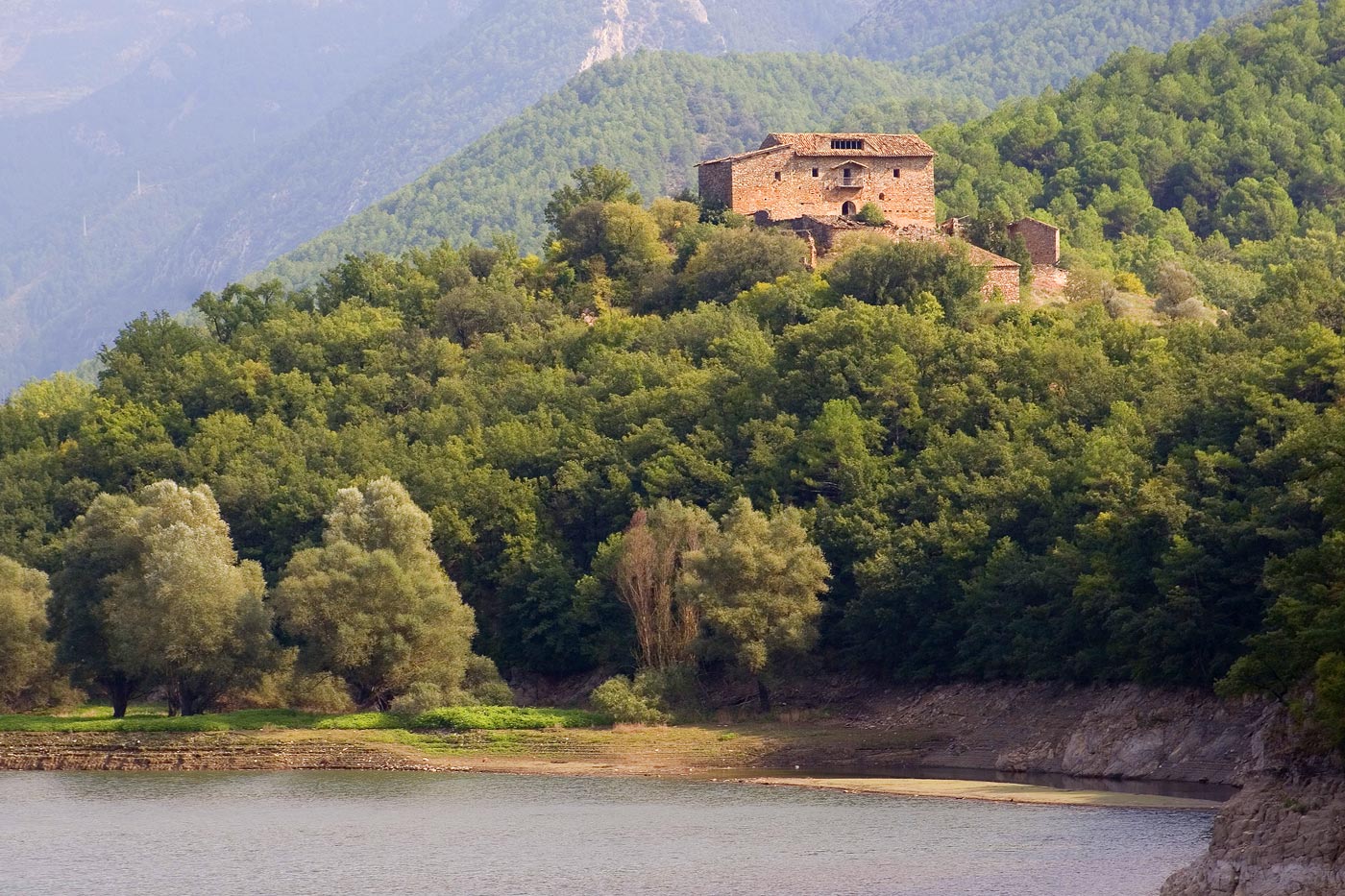
Traditional Catalonian Masia
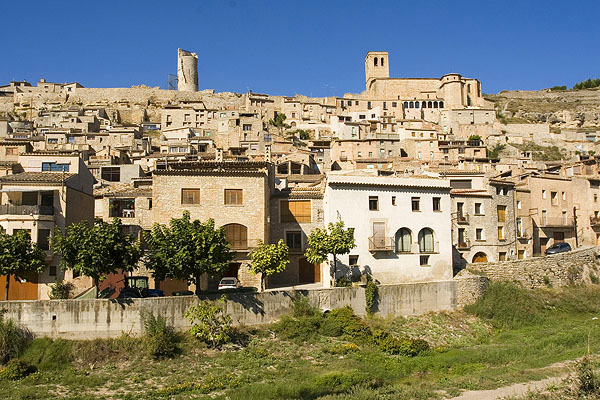
Romanic village of Guimera in Lleida province

Gaudi architecture in Barcelona city

Besalu village's medieval bridge

Horses in El Girones area

Castellfolit de la Roca is set on volcanic lava

Catalonia Pyrenees: magnificent

Catalonia is a land that celebrates its traditions

Catalonia: a gourmet destination
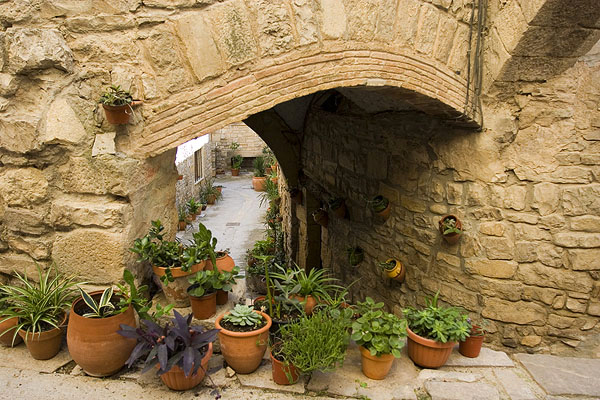
Catalonia villages are typically well-crafted

Sant Joan de las Abadesses monastery in Catalonia Pyrenees

A traditional farm house in Catalonia forest (Sierra del Cadi)
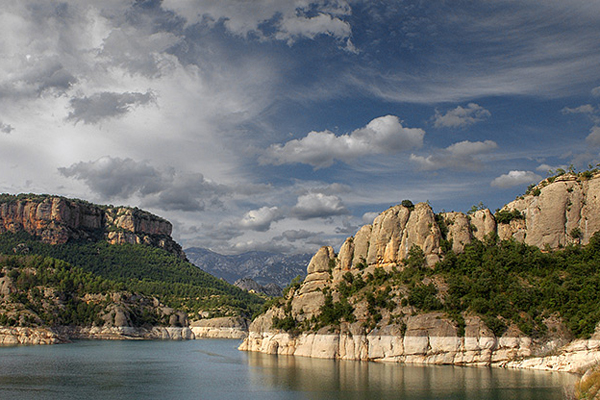
Early folds of the Pyrenees in Lleida
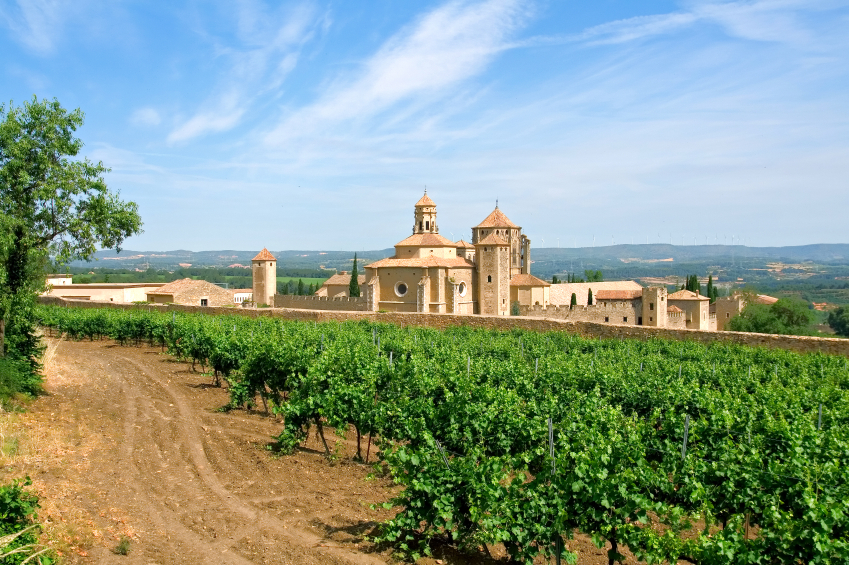
Cistercian walking route in wine-growing Penedes, southern Catalonia

Santa Pau village in La Garrotxa

Busy and trendy coastal town of Sitges

Wild swimming in La Garrotxa

Popular arquitecture and one of the best-known local traditions!

Exotic beech woods mix with Mediterranean forests

Vall de Nuria at the heart of the Catalan Pyrenees

Coll de Nargo lake in Pallars Jussa, Pyrenees
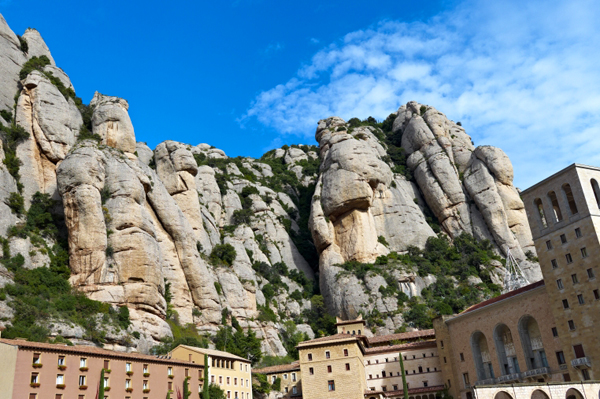
Montserrat mountain, Barcelona province

La Foradada's turquoise waters on the Costa Brava

Rich forest close to unspoilt beaches
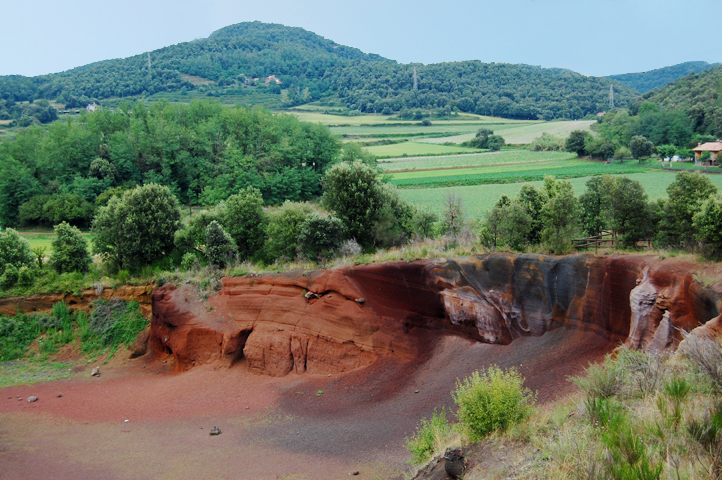
La Garrotxa, a volcanic land

Mountain and sea in Catalonia




























